|
Genres, Themes, Actors, and Directors:
- Bruce Dern Films
- Dick Miller Films
- Gangsters
- George Segal Films
- Jack Nicholson Films
- Jason Robards Films
- John Agar Films
- Prohibition Era
- Ralph Meeker Films
- Roger Corman Films
Review:
B-movie producer/director Roger Corman was given a substantial budget and studio backing (from 20th Century Fox) to make this “authentic” docudrama flick about one of the most notorious mass murders in gang warfare history. As Paul Frees’ voiceover narration helpfully informs us during the film’s opening shots:
In the years following the passage of the National Prohibition Act of 1920, the nation’s underworld rises to power and battles amongst itself, just as modern nations and corporations do. Open periods of gang warfare are followed by peace treaties, and attempts at consolidation and monopoly, each of which is shattered as new warfare erupts in quest of the booming bootlegging and vice profits. By 1929, the gangs of Chicago operate 21,207 speakeasies, and their gross income reaches $357 million. 618 members of the city’s underworld are murdered within nine years. Corruption extends from the mayor’s office to the humblest side-street speakeasy.
Robards was given a hard time for looking nothing like the actual Al Capone (Orson Welles was the original choice), but he’s effectively surly as the murderous kingpin who will stop at nothing to see his nemesis destroyed:
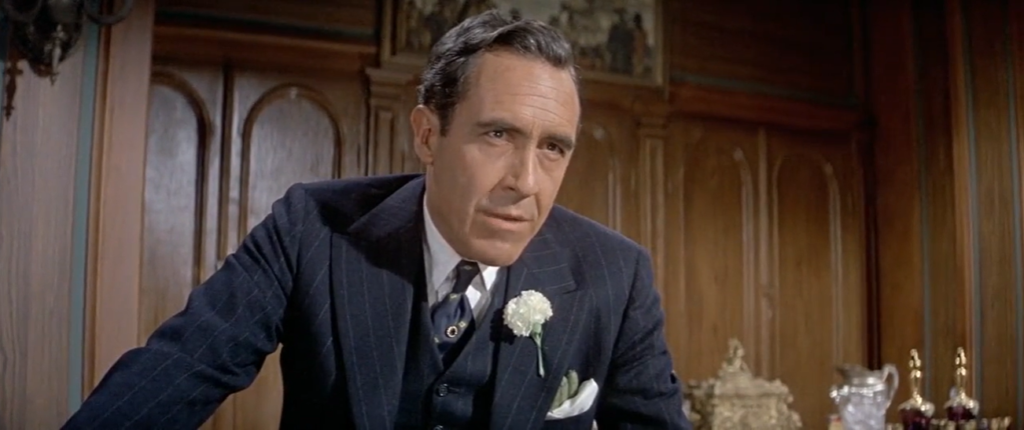
… and Meeker seems reasonably well-cast as Bugs Moran.

Meanwhile, throughout the film, the voiceover narration provides us with information about each of the leader’s various followers. Peter Gusenberg (George Segal), for instance, is described thusly:
Peter Gusenberg: born Chicago, Illinois, September 22 of 1898. Ex-convict. Mail-robber. Burglar. Hijacker. Professional killer. When, at the age of 13, he came home from school to find his mother dead, his first act was to pry the wedding ring from her finger and pawn it.
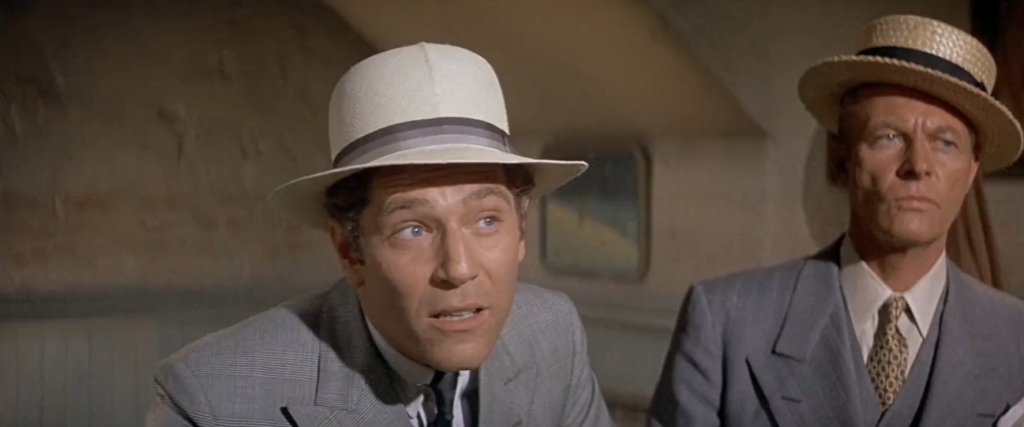
… and John May (Bruce Dern) gets the following description.
John May: born Chicago, Illinois, September 28, 1897. Married. Seven children. Twice arrested on charges of safe-blowing and burglary. No convictions. Has worked occasionally for the Moran gang as an auto mechanic. He has promised his wife he will stay out of further trouble with the law, but he is three months behind in the rent.

For others, we’re informed about the cause and date of their eventual demise as well:
Francesco Nittoni, alias Frank “The Enforcer” Nitti: born Montedoro, Sicily, January 9, 1887. Nitti is in charge of the Capone organization’s punishment squad, made up of accomplished strong-arm men and professional killers. On March 19, 1943, while under indictment for income tax evasion, Nitti will use a gun for the last time, to take his own life.

There are a lot of supporting characters in this tale — but history buffs interested in tracking it all will likely find it engaging. Meanwhile, all-purpose film fanatics may enjoy briefly spotting both Jack Nicholson (see him there?):

… and (of course) Dick Miller.
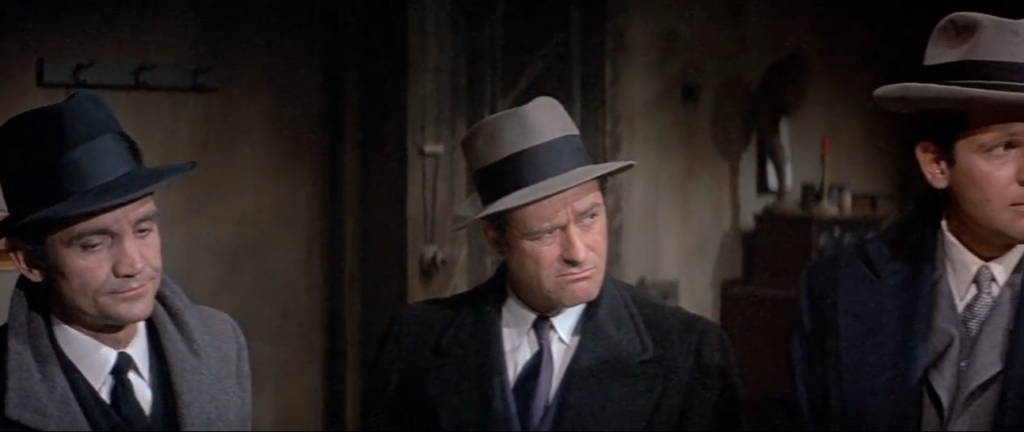
And, naturally, there’s plenty of violence to be had.
Notable Performances, Qualities, and Moments:
- Milton Krasner’s cinematography
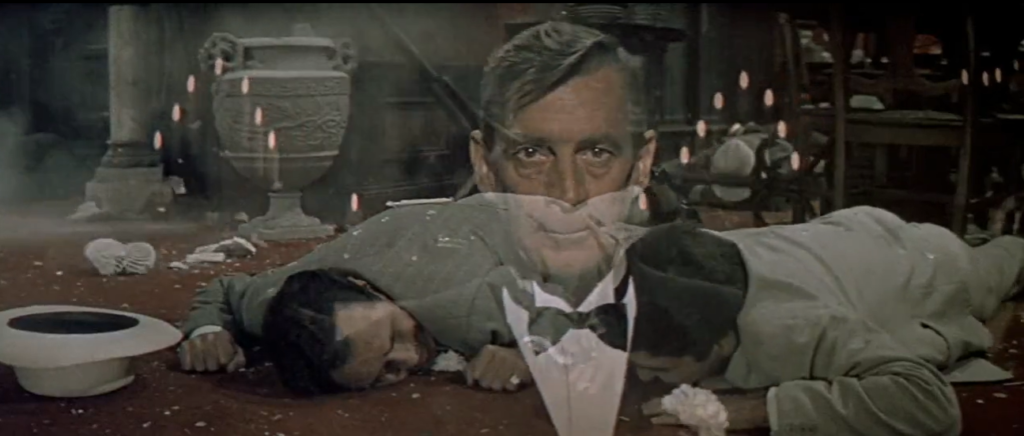
- Lionel Newman and Fred Steiner’s score
Must See?
No, though it’s worth a one-time look. Listed as a Cult Movie in the back of Peary’s book.
Links:
|
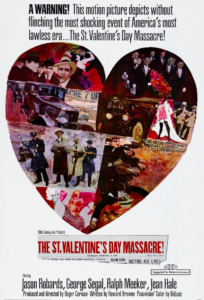








One thought on “St. Valentine’s Day Massacre, The (1967)”
(Rewatch 10/16/21). A once-must, as (perhaps arguably) Corman’s best film, and for the performances. As posted in ‘Revival House of Camp & Cult’ (fb):
“You wanna know somethin’, Jack? I like a guy who can use his head for somethin’ besides a hat rack.”
‘The St. Valentine’s Day Massacre’: In much the same way that Russ Meyer would do a few years later (to make ‘Beyond the Valley of the Dolls’), Roger Corman signed a deal with 20th Century Fox to make this rare (for him) big-budget film… which is now considered (and rightfully so) the best of the roughly 50 films he directed.
(As a producer, IMDb lists a phenomenal 515 credits for Corman – and he’s still producing!)
Wikipedia: [Roger Corman said he wanted to produce a film about the “gangsterism” that “played a significant role in the development of American culture” but “I wanted to do it honestly, and not in the usual romanticized man-against-the-system.”]
As a director, Corman did not normally come equipped with the best of screenplay material – but here he hired Howard Browne, who (9 years earlier) had penned a tv version of the massacre. As a writer, Browne’s career mostly kept him busy in television – but, for the big screen, he wrote two other gangster pics: one about Dutch Schultz (‘Portrait of a Mobster’) and one more about Capone (‘Capone’).
Browne’s research was rather thorough and ‘TSVDM’ is notable for its painstaking authenticity – rarely straying from the facts of the events. (For example… we’re told early on that, during Prohibition, 618 underworld members were killed in a 9-year period.) He incorporates narration throughout yet it’s not distracting in the way that narration often is; the information is always economic and so well-written that it contributes dramatically and serves to keep us pulled in.
Jason Robards, George Segal and Ralph Meeker take the three main leads. It’s not uncommon seeing Meeker this tough, but Robards and Segal are menacing in a way not really seen (as I recall) anywhere else.
Noticeable in smaller roles: Bruce Dern, Jack Nicholson, Dick Miller, and Joan Shawlee (Sweet Sue in ‘Some Like It Hot’).
In 2009, ‘Empire’ magazine named the film #7 in a poll of the 20 Greatest Gangster Movies You’ve (Probably) Never Seen. I don’t know what the first 6 were… but you’re likely to find this one gangster flick you’re not likely to forget.